Does gym work really benefit your cycling fitness? Here’s how to mix up your training and reap the gains
No time for long winter miles outdoors but can’t face yet another turbo session either? Despair not! Coach Landry Bobo has an alternative winter plan to answer your prayers
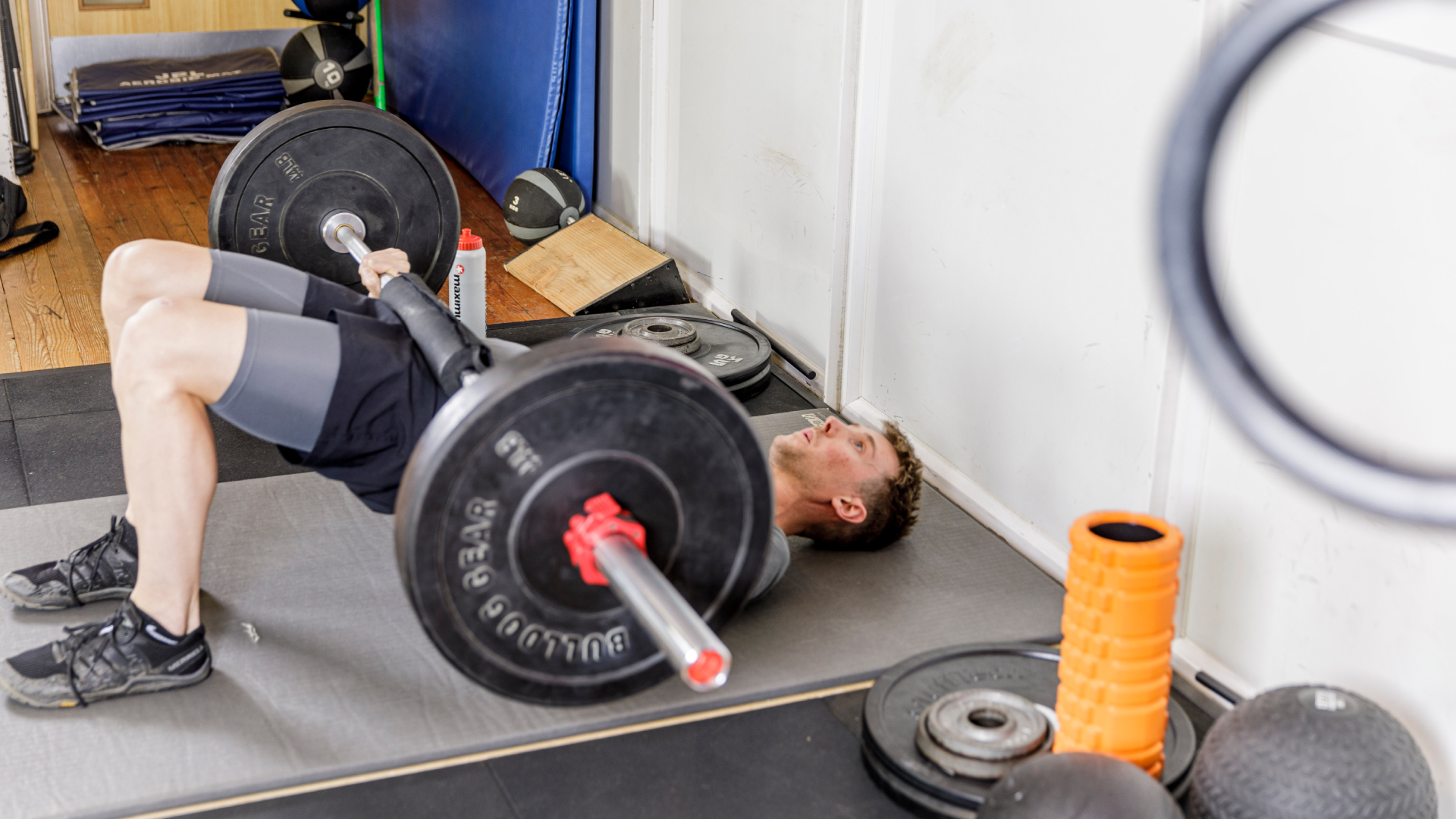
- Mixing it up down the gym
- Volume vs intensity
- The benefits of gym work for cycling explained
- Getting started: how to best reap the cycling benefits of gym work
- How to maintain your gains from the gym
- On-bike strength building alongside gym work
- How to structure your week at the gym to maximise the cycling benefits
- Neuromuscular bike workouts
- The rules
- Sample training work

The clocks have gone back, it’s dark by 4.30pm and harder to squeeze long outdoor rides into your schedule. But you know that hitting your targets in 2023 will depend on putting in plenty of solid miles in.
For many of us, doing big miles outdoors at this time of year isn’t always practical, you need good winter kit, a bike ready for the winter and for the really long rides nutrition can be key when out in the cold for hours. We know how hard it is to fit in.
And while the benefits of using a turbo trainer at this time of year are well documented, if you up the ante on the turbo, the risk is overdoing the intensity and burning out.
So what should you do? We’ve all experienced this dilemma at some point. While big base miles might be the ideal way to prepare for next season, many of us simply don’t have the time. As for high-intensity sessions, though they’re essential in small doses, they’re no substitute for those long rides building your aerobic engine.
Fortunately, there is a third way in winter training, an approach that can take you to new heights next season. It requires neither four-hour turbo sessions nor super-long rides outdoors. Better still, it reduces the risk of mid-season burnout. This is the varied, effective winter training you’ve been waiting for!
Mixing it up down the gym
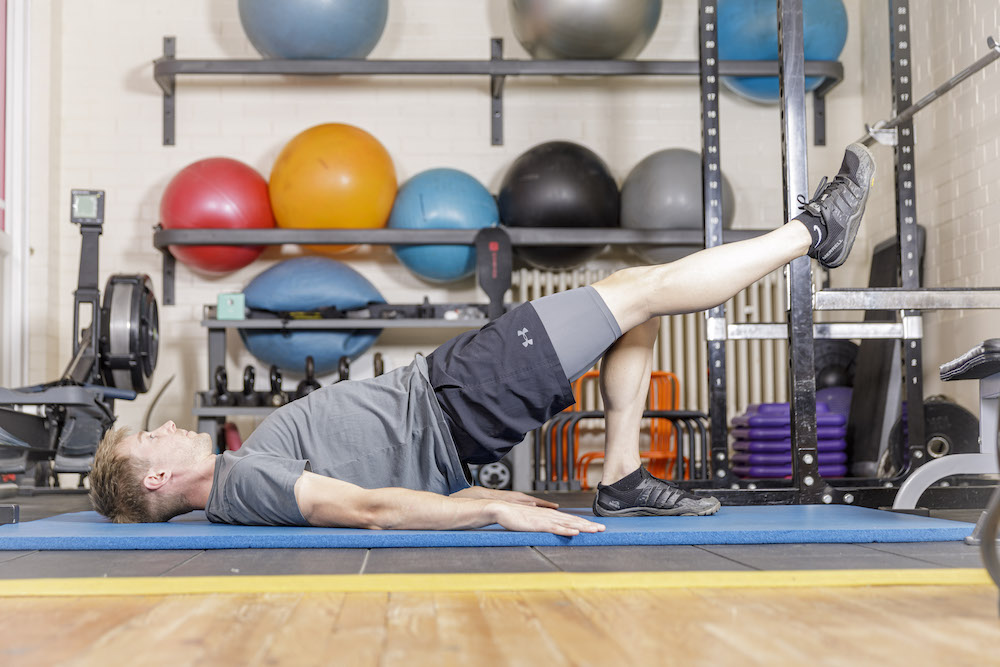
Strength training at home or in the gym can bring significant benefits
Yes, you’ve guessed it, this plan involves the gym. What was once avoided for fear of ‘getting bulky’ has in recent years caught on among cyclists. A strength training programme, properly periodised with cycling training, can provide a big jump in fitness. By the time spring rolls around, you’ll already have an extra gear – without having increased mileage or intensity.
The biggest challenge when adding gym work is figuring out how everything fits together: Should I lift before or after my ride? What kind of cycling training should I do along with it? Should I be doing any intervals? While there are lots of articles about what kind of lifting to do in the gym, what’s less understood is how you should structure your winter training in conjunction with cycling.
Get The Leadout Newsletter
The latest race content, interviews, features, reviews and expert buying guides, direct to your inbox!
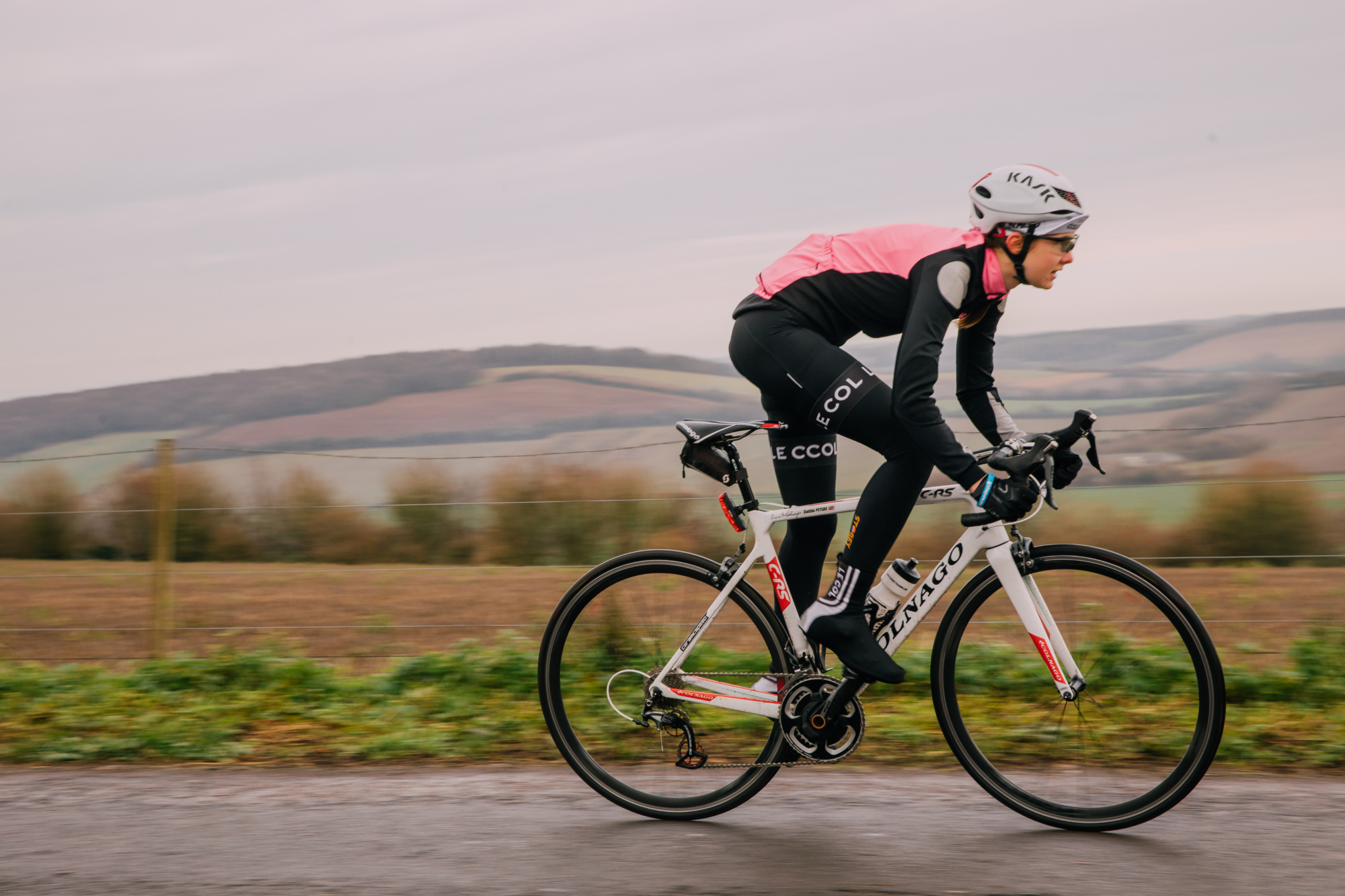
Strength training can be done on the bike
If you do too much in the gym, you may sacrifice cycling performance. Conversely, too much or the wrong type of cycling could diminish your returns in the gym. But with the right approach, you will be able to reap strength gains in the gym that make you faster on the bike.
Volume vs intensity
In the high-volume versus high-intensity winter training debate, most cyclists have worked out what coaches and pros had known for decades: that there is simply no replacement for big miles on the bike. The adaptations that you get from long miles at endurance pace simply can’t be procured from high-intensity training.
To make matters more confounding, many riders also began to realise that if they did too much high-intensity training in the winter, they’d end up feeling stale or mentally burned out by mid-season. “Time-crunched athletes might see short-term, fast results and performance improvements by doing lots of high intensity, but realistically it’s not sustainable,” says Johann van Zyl, a former WorldTour cyclist and coach with Catalyst Coaching. “For me, training needs to be sustainable above all, so that the athlete can stay consistent.”
If neither high volume nor high intensity are good options, what the heck should a time-crunched rider do in the winter to improve? This is where our third way comes in – and the good news is, it’s realistic for most riders, requiring no increase in hours or intensity.
The benefits of gym work for cycling explained
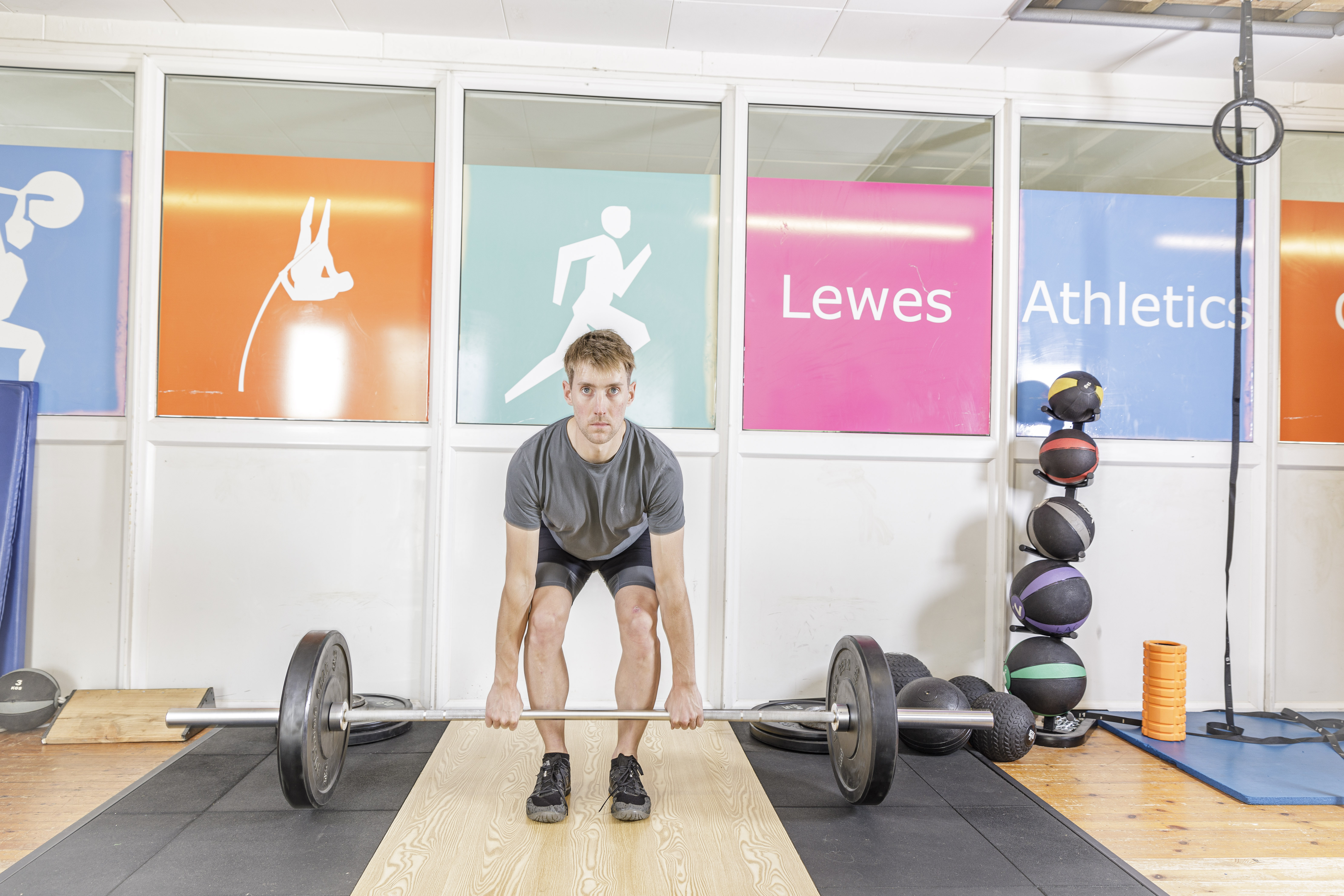
The centrepiece of the ‘third way’ plan is to build strength in the gym while harnessing those gains to get stronger and faster on the bike. Simple enough, right? But how exactly does lifting weights make you pedal a bike faster? After all, squatting 100kg seems a far cry from cycling 100 miles.
With consistent strength training, your body learns to send stronger, faster signals to your muscles to improve ‘neural drive’ – think of it as an enhanced WiFi signal. This in turn allows you to push and pull quicker, more efficiently, and more powerfully. “Strength movements train a higher percentage of muscle fibres than any slow-cadence work on the bike,” says Daniel Matheny, owner of Matheny Endurance and NSCA-certified strength coach. “A strength-trained cyclist will use a smaller percentage of their muscle capacity on the bike and save larger motor units for later on in a race or ride when it matters most.”
Strength training for cyclists is also a boon from a health and resilience standpoint. “Anything that sets an athlete back from consistency is a hindrance,” adds Matheny. “If they can incur less of an injury from a crash, or avoid an overuse injury, they are going to have better long term performance.”
Lifting alone is not enough. You need to transfer your strength gains from the gym to actually help you pedal a bike faster. That means you need to select exercises in the gym that will target the muscles you use in cycling, but you also need to do neuromuscular cycling workouts to turn your hard-earned gym gains into measurable watts on the bike. This is the equation to unlock success:
(Gym strength + neuromuscular cycling workouts) x proper planning = Watts!
Ready to start pumping that iron? Let’s get going…
Getting started: how to best reap the cycling benefits of gym work
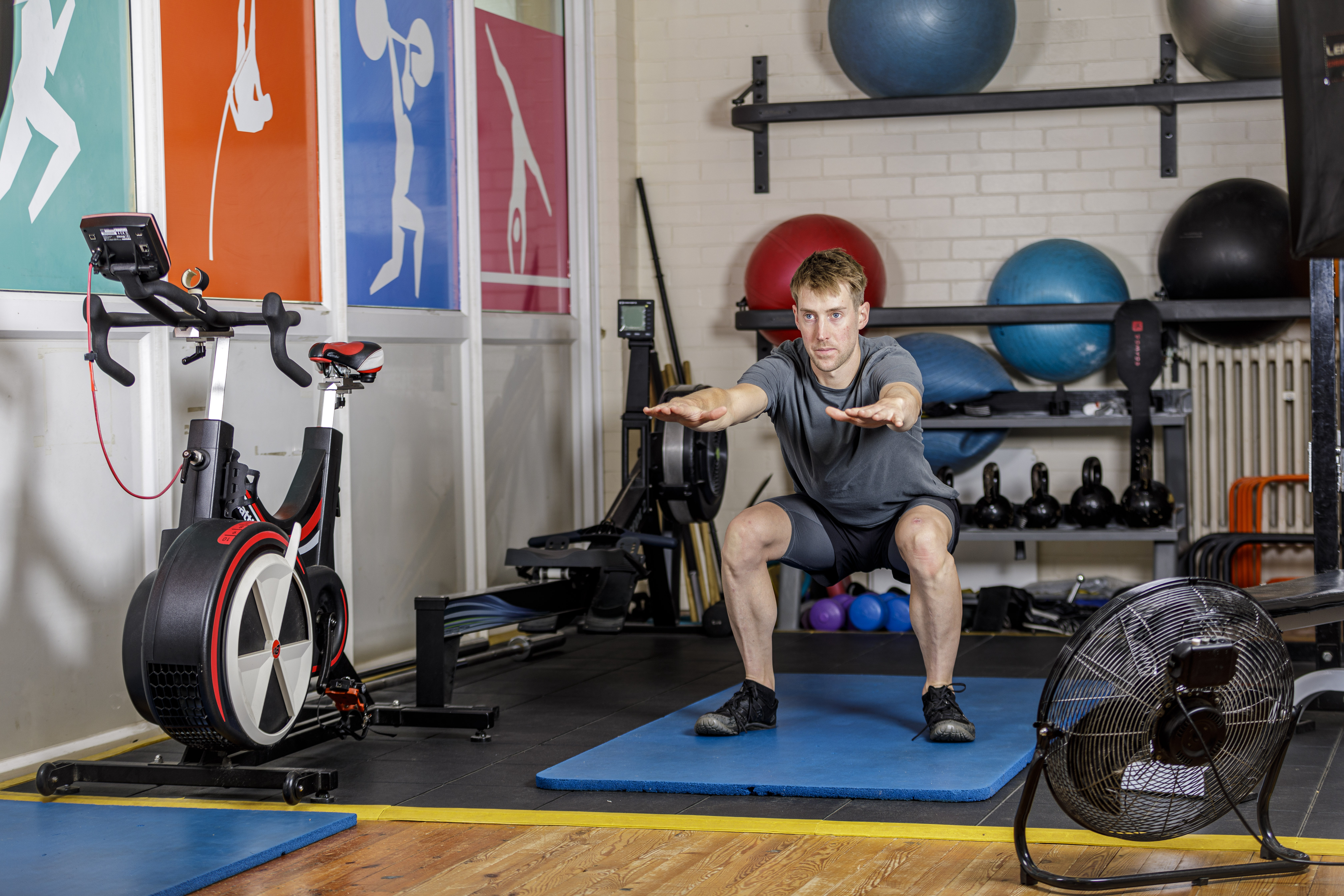
Once you’re sold on strength training, it’s easy to get over-ambitious in your initial workouts and end up so sore the next day that you can barely walk. Cyclists have a tendency to overdo it. “A cyclist’s highly trained cardiovascular system may disguise how hard the muscular effort of lifting actually is,” says Matheny. “Just like progression of volume or intensity in cycling, strength training must proceed gradually.”
First up, you’ll need to choose your exercises. Selecting which movements and lifts to do is a vast subject we don’t have the scope to cover in detail here. Suffice to say, there are lots of resources about this subject online. As a general rule, target four primary movements for each gym session: lower body movements that include a squat and a hinge and, optionally, upper body movements including a push and a pull.

If you’re new to lifting, your first couple of weeks will seem rather paltry if you’re doing it right. This adaptation phase consists of high reps at low weight, focusing on proper technique – for your first few sessions, it’s worth getting some instruction from a qualified S&C coach. Remember, tendons and ligaments aren’t yet used to handling heavy loads, and you need to give them time to adapt. During the adaptation phase, stick to sets of 10-15 reps, and do three to four sets per muscle group.
After the adaptation phase, you’re ready to increase the weight for the hypertrophy phase. This should last four to six weeks and is all about building a solid ‘base’ of strength and muscle mass. In this phase you should be doing six to 10 reps per set, with a total of three to four sets per muscle group. As you get stronger, incrementally increase the weight to make sure you are still being challenged.
After the hypertrophy phase, you’ll be feeling a big difference in your strength in the gym – and hopefully on the bike too. The final strength phase is where you maximise the neural benefits of strength training. In the strength phase, you should do three to five reps per set, completing four or five sets per muscle group. It’s crucial in this phase to take longer rest periods so you can put out your best effort on each set. You should take a minimum of two minutes’ rest between sets.
How to maintain your gains from the gym
A common mistake among cyclists is not continuing strength training when the season rolls around. It takes only a couple of months of no lifting to lose most of your cycling strength gains from the gym. Fortunately, it does not take much to maintain them – just one gym session per week is all you need. In my experience, spending one hour less on the bike per week and using it in the gym provides a net benefit to on-the-bike performance.
Strength maintenance should be individualised, but a pyramid structure works well. Perform three to four sets of four to six reps of your normal exercises, starting light and gradually increasing the weight until the last set just touches what you were lifting in the strength phase. This should be just enough to keep that neural drive topped up without being too taxing.
On-bike strength building alongside gym work
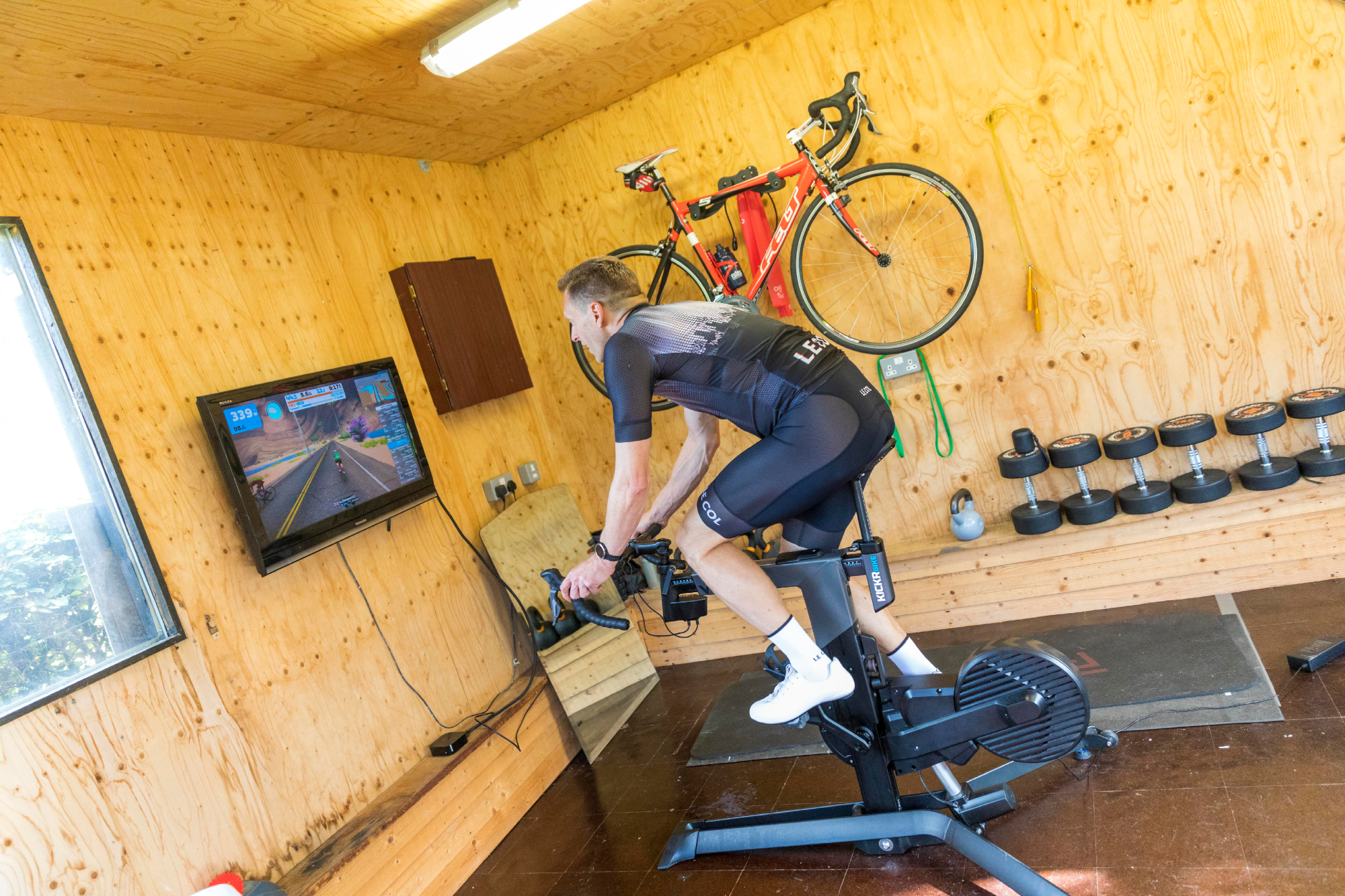
OK, so you now know how to structure your strength training in the gym, but what about on the bike? As mentioned, neuromuscular training can help transfer your strength gains to cycling. During periods when you’re lifting hard in the gym, it’s best to avoid doing overly taxing interval sessions. Instead, neuromuscular workouts complement your winter strength training without adding too much high-intensity strain.
These workouts are all about recruiting muscle fibres in different ways to teach you to produce power as efficiently as possible on the bike. With greater efficiency, you will consume less oxygen at a given wattage. Meanwhile, training your rate-of-force production will improve your sprinting capabilities. Bear in mind, the best track sprinters in the world can sustain up to 200rpm, and they do so by training their neuromuscular system with high-cadence workouts. Proficiency at high cadence is critical for racing and fast, sustained efforts. If you tend to grind gears or find it difficult to sustain 100rpm-plus, you should dedicate some time to high cadence training. At the other end of the spectrum, low-cadence work demands greater amounts of force to achieve the same power output, which activates more muscle fibres, thereby improving fatigue resistance. “One reason I value low-cadence training is the fact that you can create the [adaptive] signal without adding a huge amount of stress to your system,” van Zyl says. “If you only have 45-60 minutes to ride, then low-cadence training is a great way to use your time.”
Lastly, sprint training, like gym work, improves your ability to send strong signals to your muscles to create powerful muscle contractions. Sprints will enhance strength transfer from the gym, as well as improving your sprinting. Most riders benefit from doing a sprint session two or three times per month.
How to structure your week at the gym to maximise the cycling benefits
Throughout your winter strength programme, plan ahead to structure each training week. “I’m a big believer in torque sprints at a low cadence or seated, in addition to a quality strength session on the same day,” says van Zyl. This is a great way to overload your muscles and get more out of your sprint workouts. Should you lift before or after you ride? A lot of this is down to time constraints or making your schedule work around other commitments. In general, it is probably best to lift before you ride. Gym-based strength training for cycling is a priority this time of year and you want to be fresh coming into it. However, if you do need to lift after, just make sure you programme an easier ride that day and refuel before lifting. If possible, lift when you feel freshest, on a day following a rest day or easy recovery ride.
One of the best ways to evolve as an athlete is to find new, inventive ways to improve. For those with limited training time and training in sub-optimal weather conditions, training must be purposeful. Many athletes I have coached have seen great improvements with the ‘third way’ approach outlined above, and I believe it is highly effective for most riders. After a winter following this cycling training plan, you’ll roll into spring feeling not just leaner and stronger but fresher mentally too.
Neuromuscular bike workouts
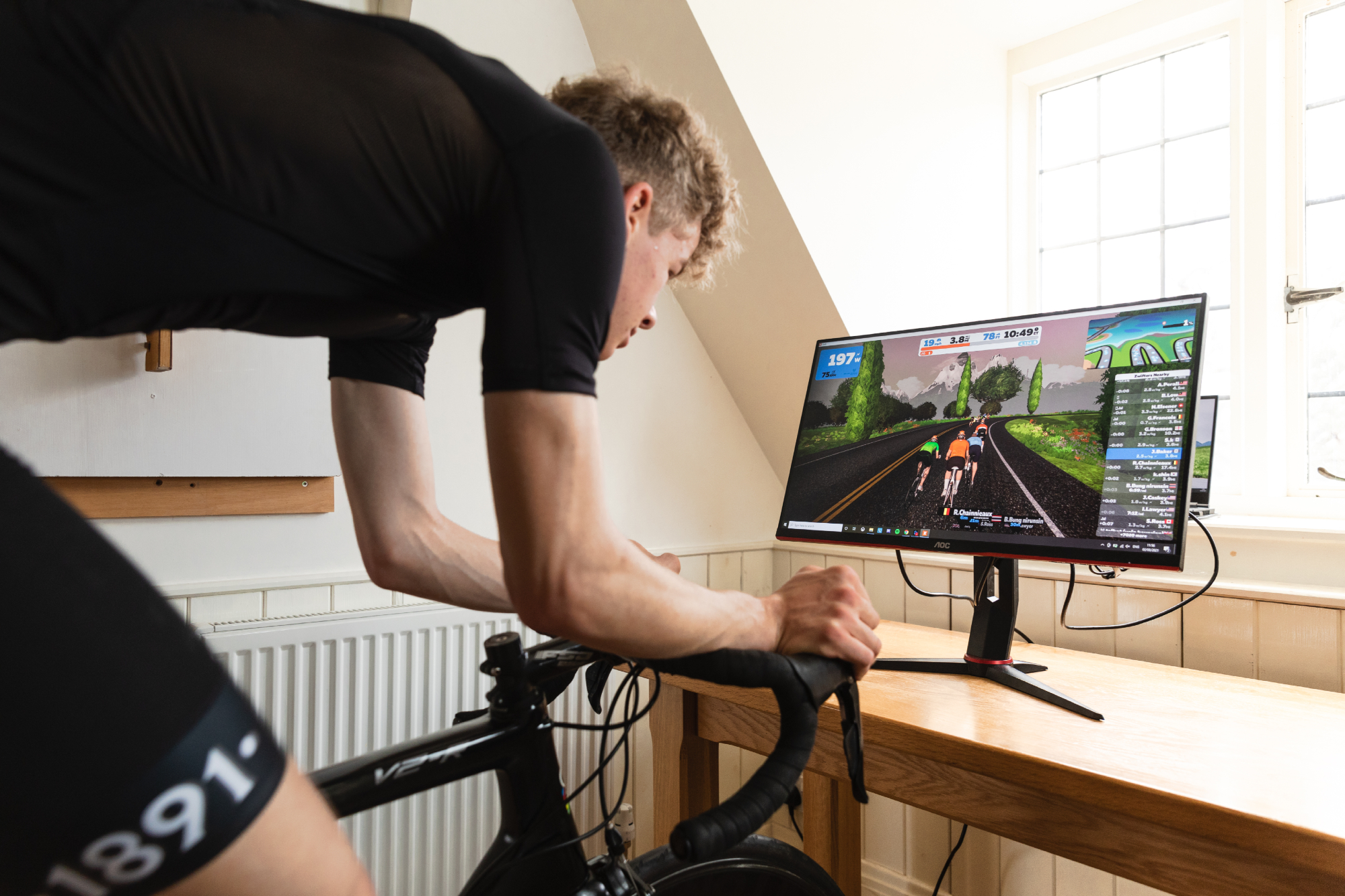
Convert new-found gym strength into cycling gains by boosting the neural communication between brain and body with these fast- and slow pedalling bike sessions:
Sprints
Big-gear sprints: Shift into a big gear and slow down to 5mph, then sprint for 20 seconds while staying in that gear. You’ll be grinding at the start but should reach upwards of 110rpm by the end. You can do these standing or seated.
Neuromuscular power sprints: Select a moderate gear and snap into sprinting as quickly as possible. Achieve the highest power possible for 10 seconds.
Low cadence
Muscle tension intervals: Ride at 85-90% of FTP (Zone 3) and around 50-60rpm. Start with four times four minutes and extend duration as you get stronger.
High cadence
Spin-ups: Select a moderate gear, then spin it as high as possible for 30 seconds. In the last 10 seconds, you should be close to the highest cadence you can sustain without your form breaking down.
One-minuters: Perform between five and 10 one-minute intervals at between 110-120 rpm at Zone 3 power. Focus on a smooth pedal stroke. Rest for one minute in between.
Strength training at the gym: the rules for maximum cycling benefits
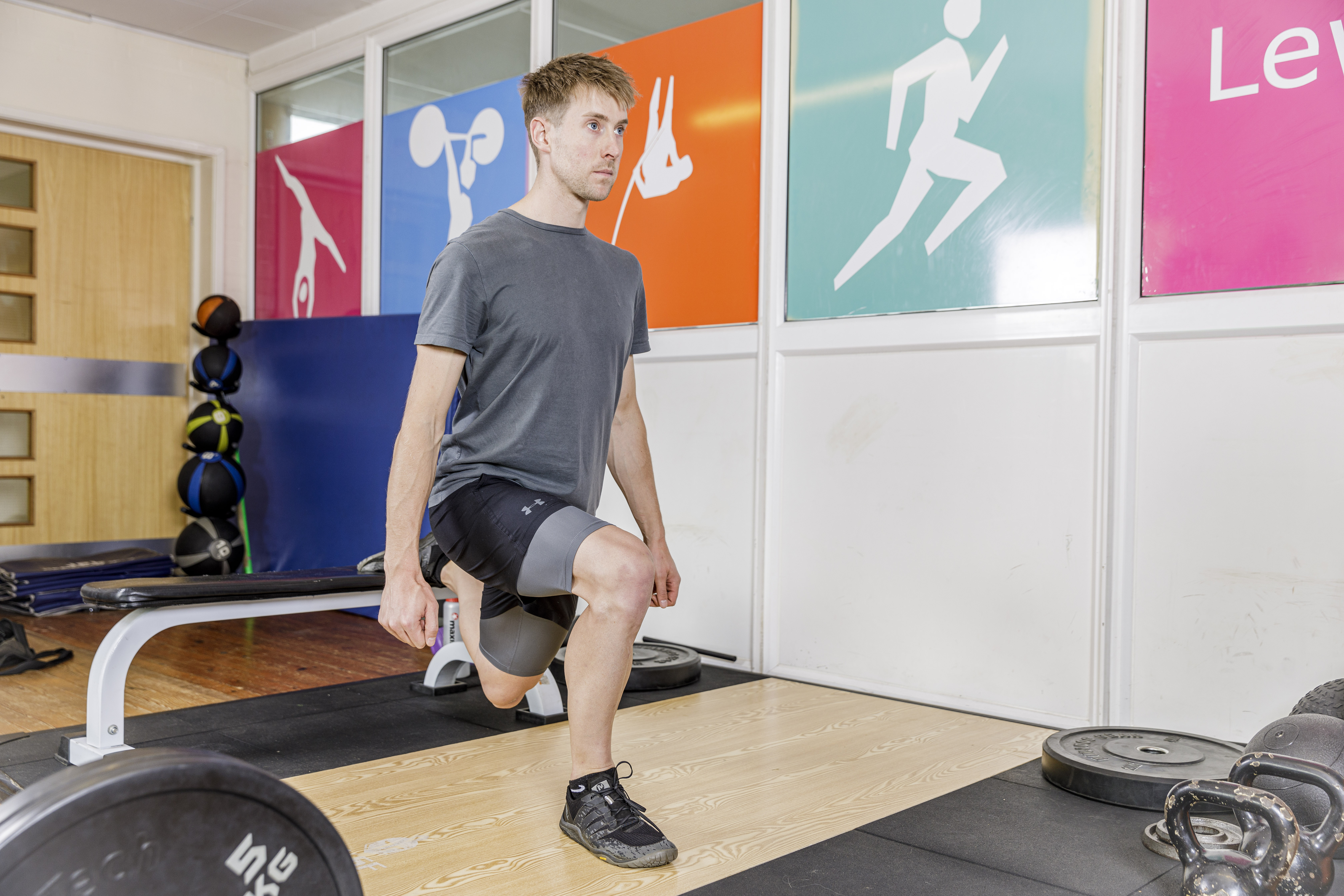
If you want to hit the gym this winter, there are a few hard-set rules to bear in mind…
Rule 1: Never lift on back-to-back days. Your body needs at least one full day of recovery in between lifting sessions. Ideally, lift every two to four days.
Rule 2: Never max-out. Not only is this very taxing, it’s unsafe. Always leave one to two reps left in the tank. You should never feel like you’re outside of your comfort zone.
Rule 3: Start conservatively and progress gradually. It’s easy to overdo it. Think that maybe you can lift 60kg? Start at 55. As your ability level increases, what once felt hard will begin to feel easier – be patient.
Rule 4: Don’t lift on rest days. Though it isn’t a cardio workout, it’s still stressful to your body. Make sure the rest days are truly restful.
Sample training week including gym work and cycling
The week below demonstrates a good general structure to follow for your winter strength programme, regardless of specific phase. It consists of two lifts, one high-cadence, one low-cadence, and one sprint session.
| Row 0 - Cell 0 | In the gym | On the bike |
| Monday | REST | REST |
| Tuesday | 50min strength session | 60min big-gear sprints |
| Wednesday | - | 90min - 5 x 5min @ low cadence |
| Thursday | - | 90min @ Zone 2 |
| Friday | REST | REST |
| Saturday | 50min strength session | 90min - 5 x 6min @ high cadence |
| Sunday | - | 120min @ Zone 2 |
This full version of this article was published in the print edition of Cycling Weekly. Subscribe online and get the magazine delivered direct to your door every week.

Thank you for reading 20 articles this month* Join now for unlimited access
Enjoy your first month for just £1 / $1 / €1
*Read 5 free articles per month without a subscription

Join now for unlimited access
Try first month for just £1 / $1 / €1

Landry Bobo is a cycling coach with Evoq.bike living in North Carolina, USA. He has raced competitively in road cycling for over a decade and holds a master's degree in Exercise Science from Appalachian State University where he performed research in the field of sports psychology. Landry loves to share his experience and knowledge with athletes of all ability levels.
-
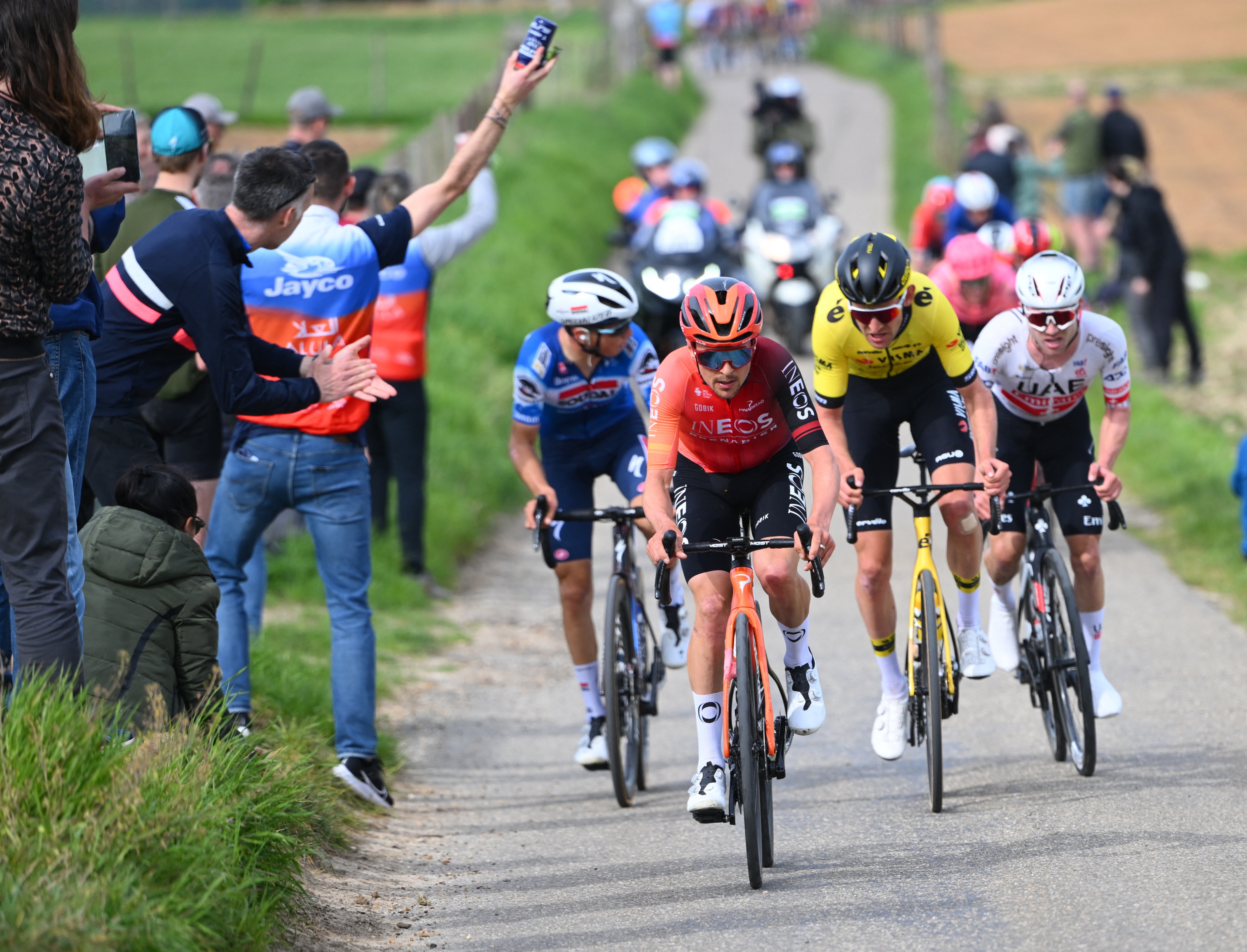 How to watch the Amstel Gold Race 2025: Everything you need to live stream the Dutch Classic
How to watch the Amstel Gold Race 2025: Everything you need to live stream the Dutch ClassicAll the broadcast information for the first of the Ardennes Classics on 20 April with Tom Pidcock – here's how to watch Amstel Gold Race online and on TV.
By Adam Becket
-
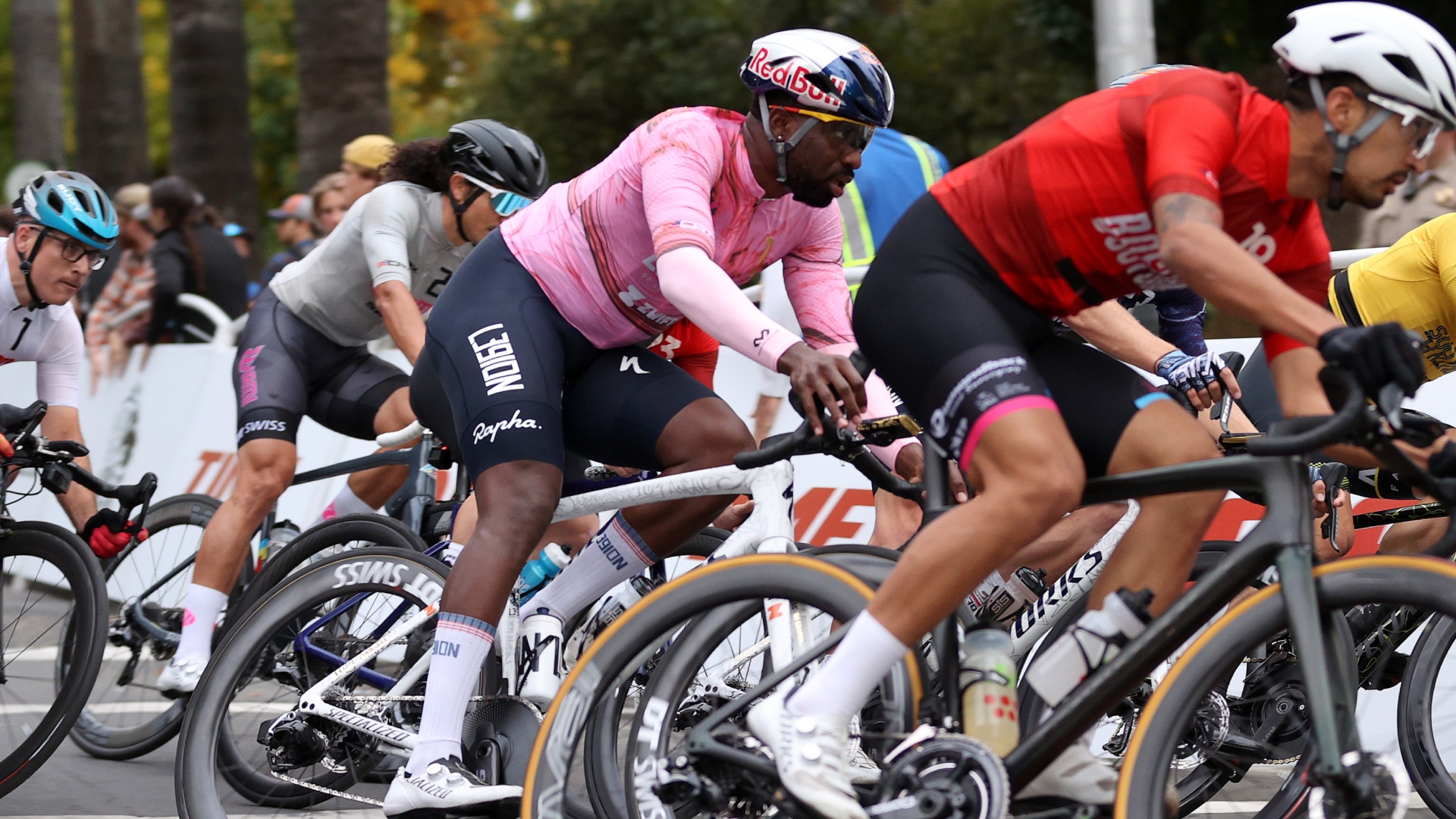 Can you make a living as an American domestic road racer? A look inside the part-time professionalism of the American road peloton
Can you make a living as an American domestic road racer? A look inside the part-time professionalism of the American road pelotonAfter decades of booms and busts, the American road scene finds itself in a fragile place. We spoke to riders to understand the reality of chasing the dream on home soil
By Logan Jones-Wilkins
-
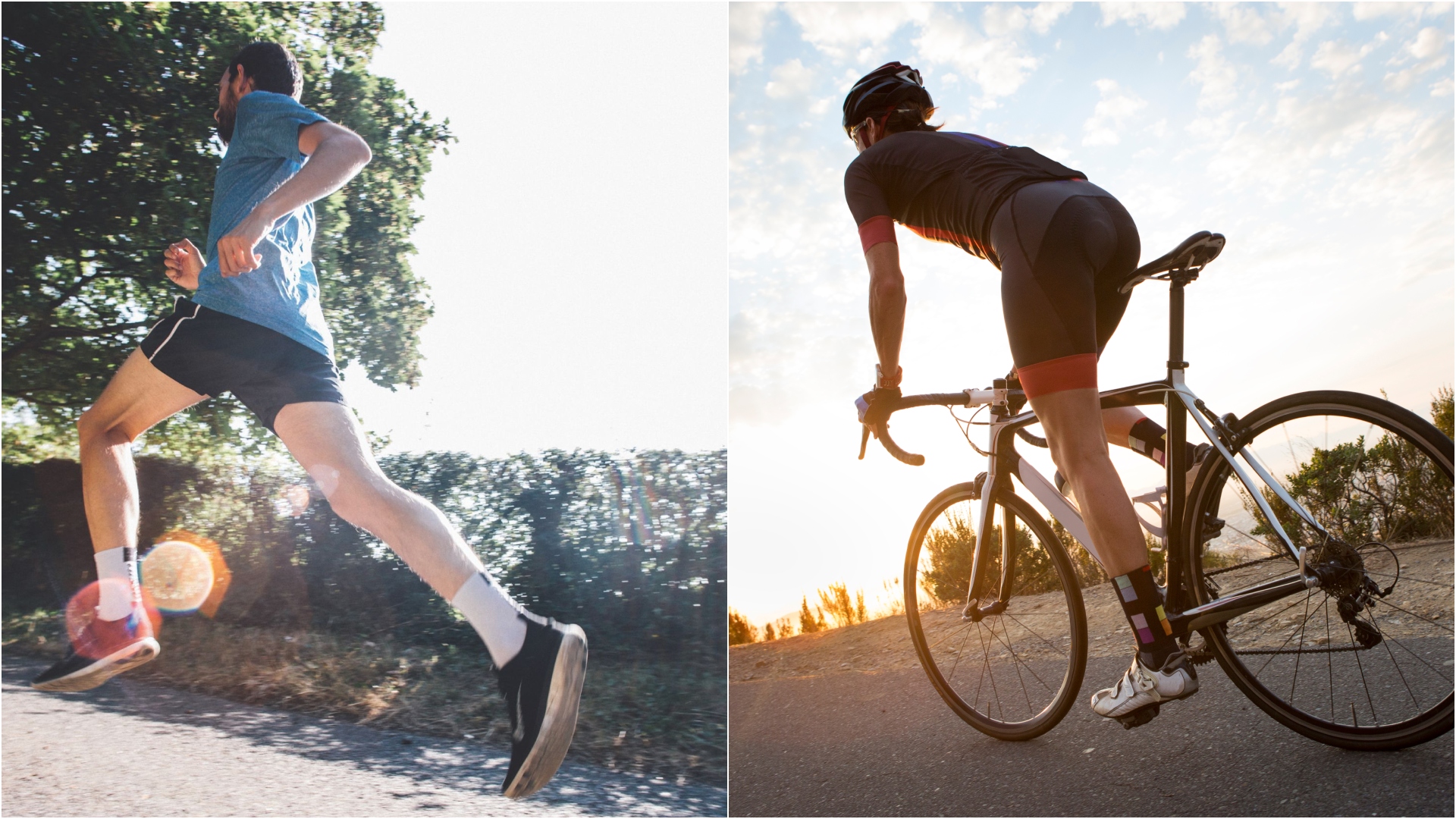 What is the biking equivalent of a 'couch to 5k' running challenge?
What is the biking equivalent of a 'couch to 5k' running challenge?Why it could be easier to train for a longer cycling event than a 30-minute run
By Caroline Dezendorf
-
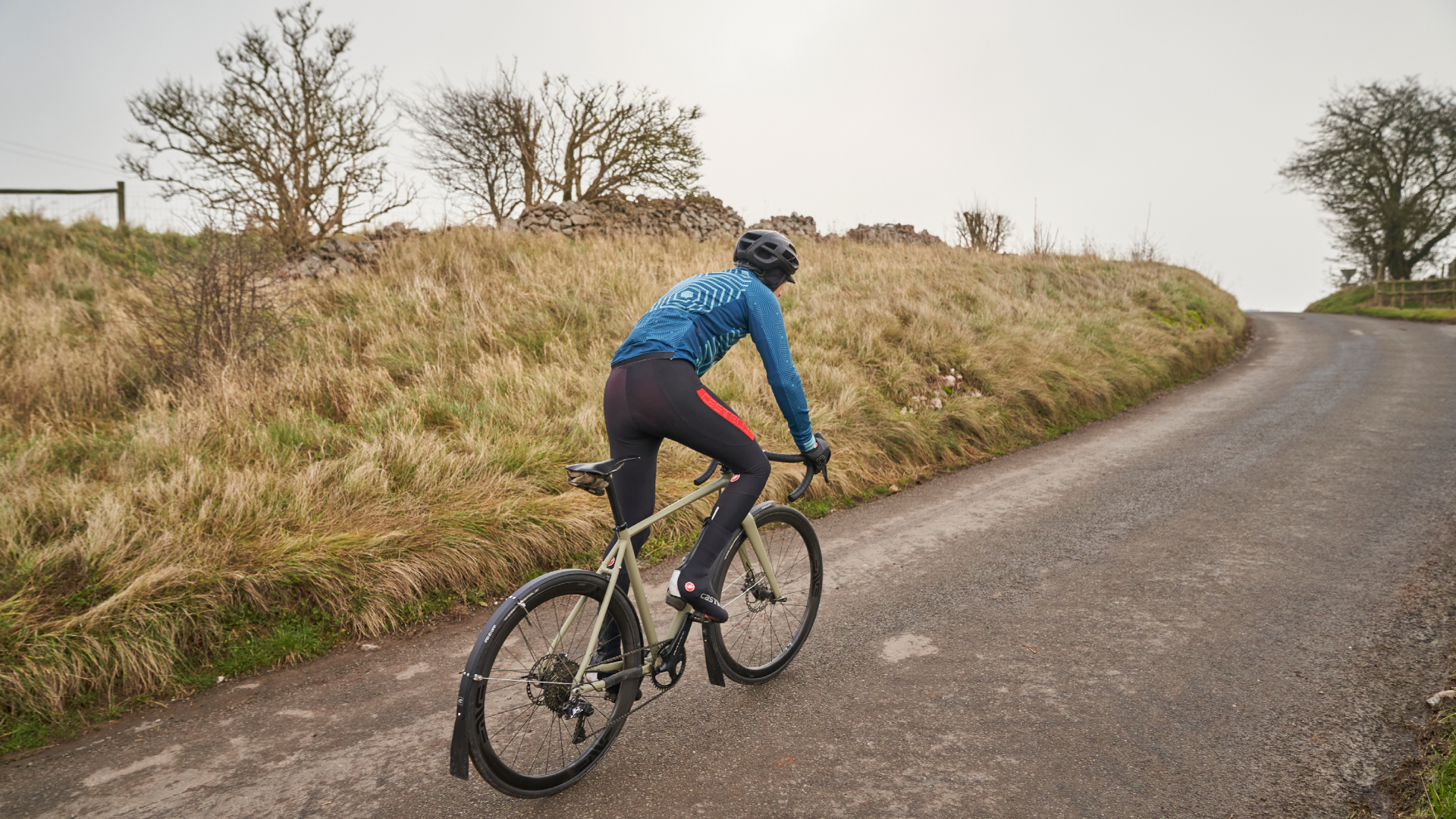 Cycling through the incoming Arctic blast: our top ten tips for winter riding
Cycling through the incoming Arctic blast: our top ten tips for winter ridingAs the temperatures take a dramatic turn for the colder in the northern hemisphere, we share our winter riding tips to get you through the worst of the weather
By Anna Marie Hughes
-
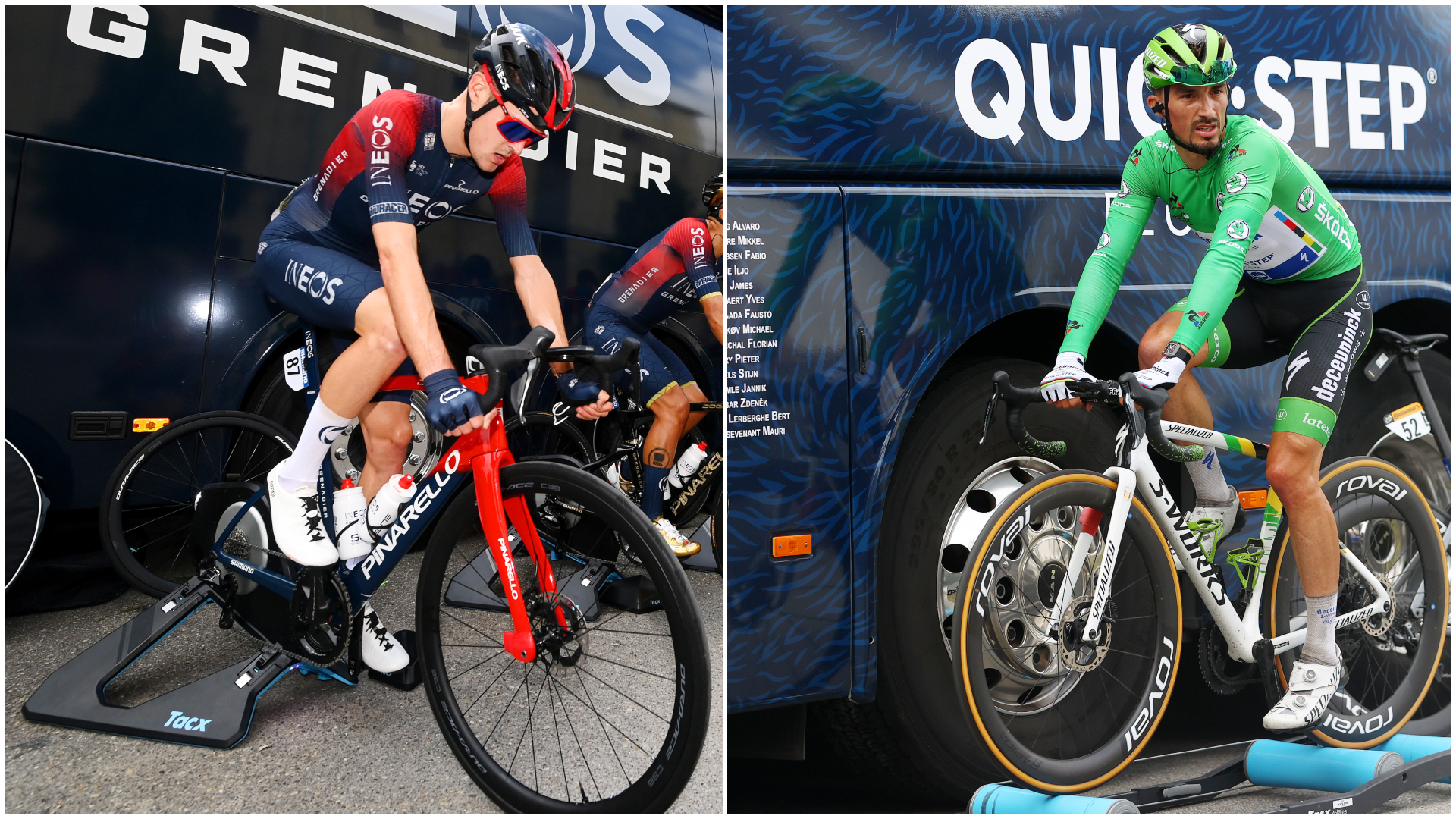 Rollers vs indoor bike trainers: which is best for you?
Rollers vs indoor bike trainers: which is best for you?Indoor bike trainers might get the most attention – but don't underestimate a humble set of rollers, here's why...
By Michelle Arthurs-Brennan
-
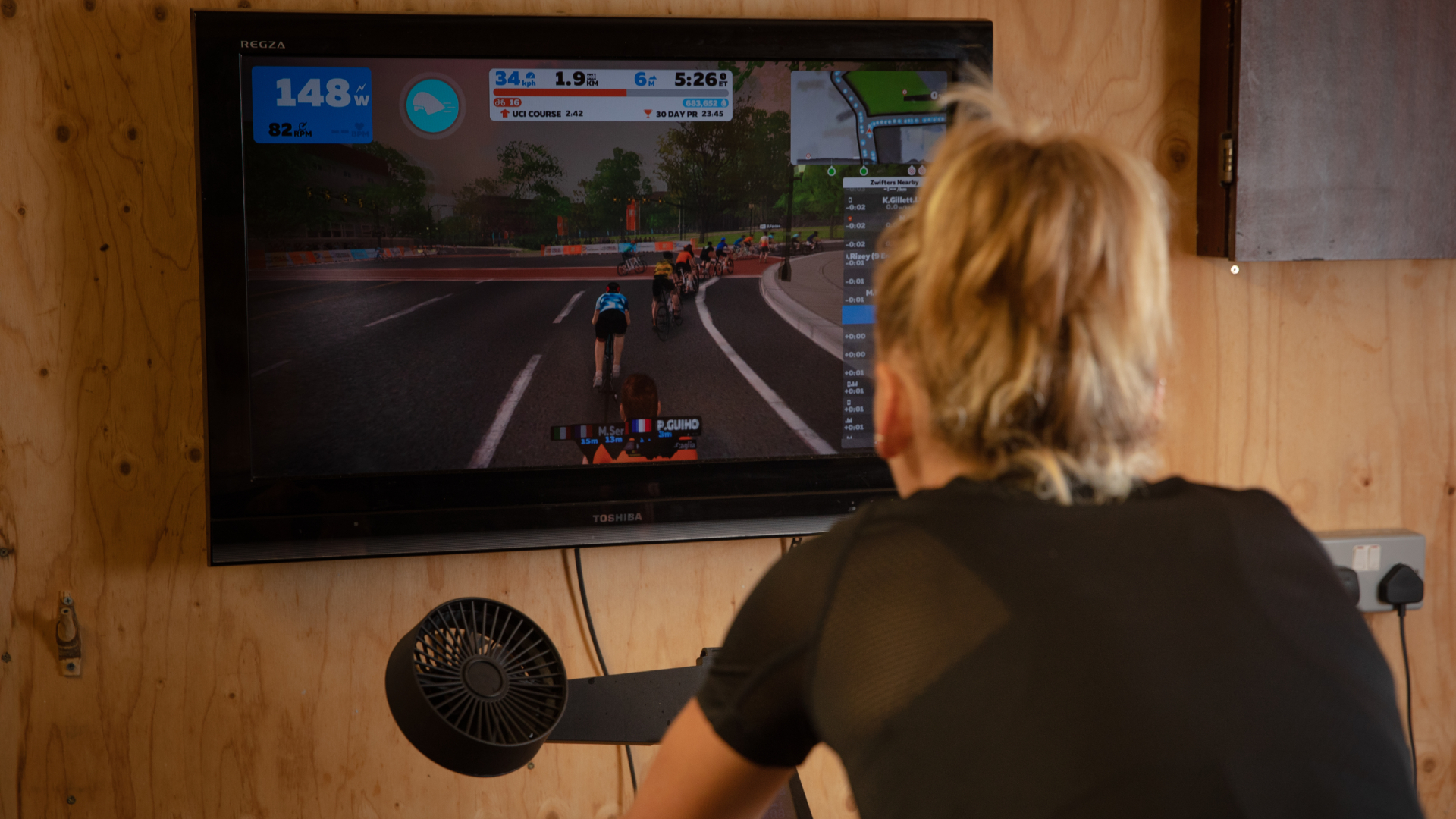 Best indoor training apps for cycling: virtual riding platforms and training analysis apps
Best indoor training apps for cycling: virtual riding platforms and training analysis appsWhether it’s virtual racing and riding or training tracking, planning and analysis, there are plenty of options to choose from - here’s our top picks
By Tom Epton
-
 'I was able to pick and choose from two cycling cultures, French and English': Simon Carr on what formed him as a cyclist
'I was able to pick and choose from two cycling cultures, French and English': Simon Carr on what formed him as a cyclistThe dual-nationality rider on blending the best bits from two nations' cycling cultures
By David Bradford
-
 'I've always been able to empty myself to the point of throwing up': Jack Carlin on what makes a great sprinter
'I've always been able to empty myself to the point of throwing up': Jack Carlin on what makes a great sprinterThe GB sprint ace talks us through what it takes to go very, very fast over the shorter distances on the track
By David Bradford
-
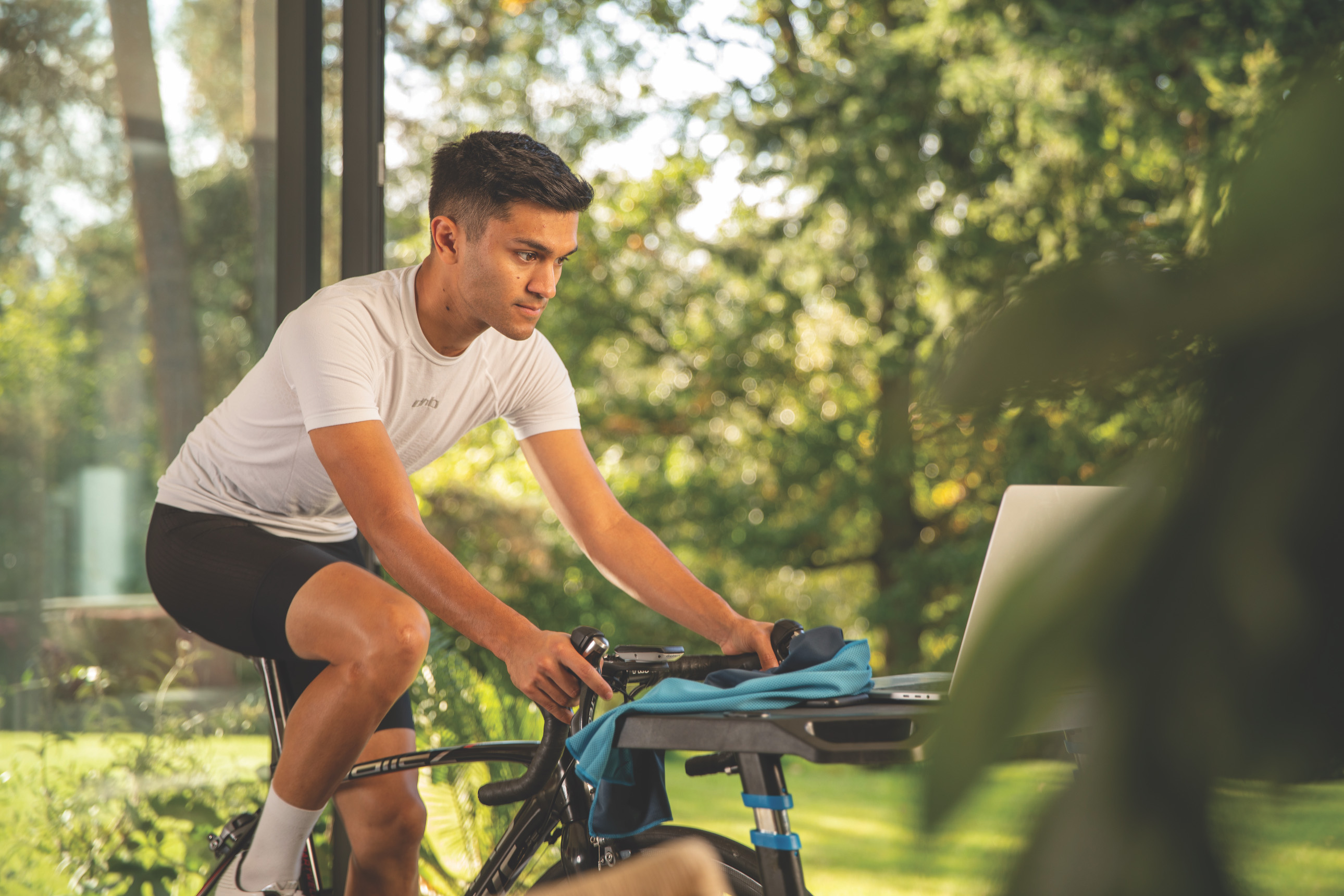 Lab to living room: How to benchmark your cycling fitness at home
Lab to living room: How to benchmark your cycling fitness at homePhysiological testing is no longer the preserve of the sports science lab. Hill-climb champion and coach Tom Bell explains how to measure your key benchmarks from the (dis)comfort of your home
By Tom Bell
-
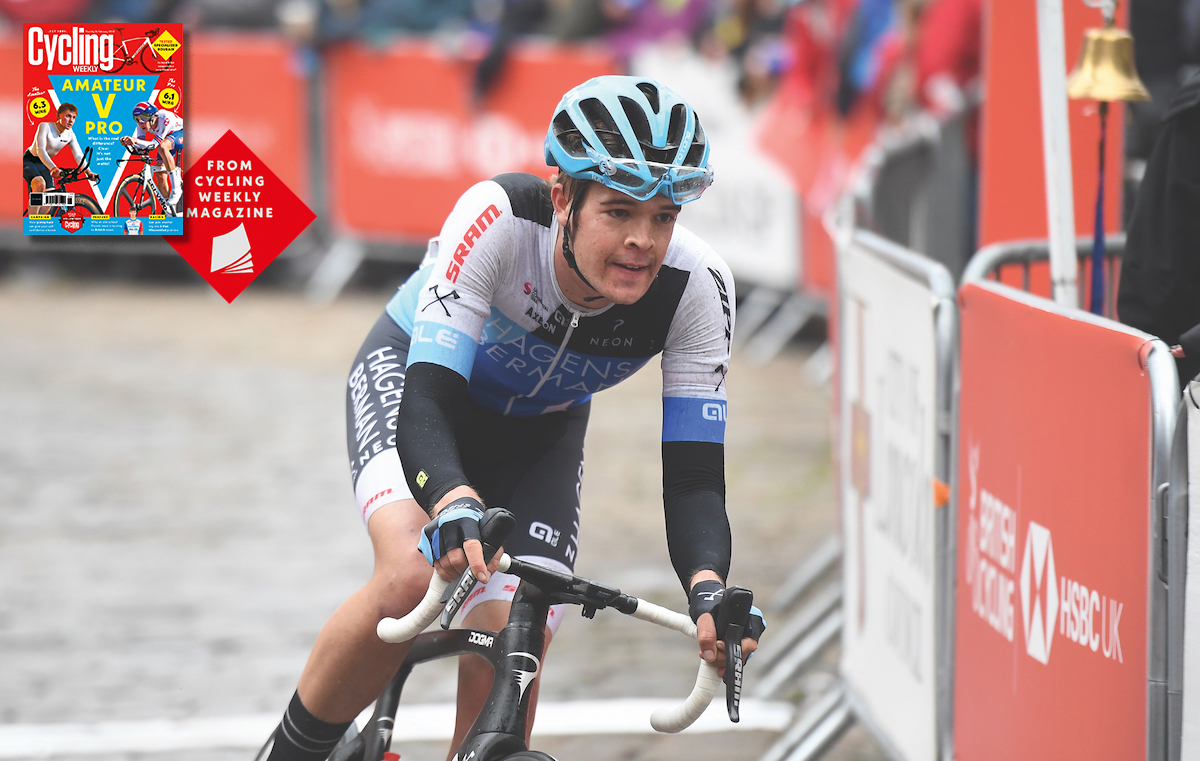 How many watts does it take to beat a pro cyclist?
How many watts does it take to beat a pro cyclist?What’s your dream threshold? Four, five, maybe even six watts per kilo… At what point does the target number become impossible except for pros? Joe Laverick finds out
By Joe Laverick